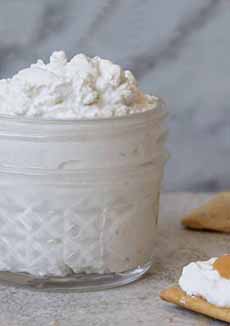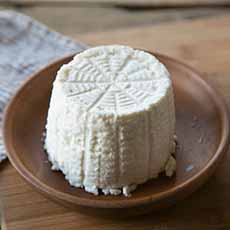Easy Heirloom Tomato & Ricotta Pizza Recipe
|
|
Before summer’s heirloom tomatoes fade into memory until next year, here’s an easy pizza recipe from Southern Selects, growers of fine produce. This is a partially cooked pizza: Only the crust is baked. The other ingredients are layered on top of the cooked crust in their fresh state (photo #1). It may be different, but it’s delicious. > The history of ricotta cheese is below. If you’re not a fan of ricotta, you can substitute fresh goat cheese, diced from the log. 1. PREHEAT the oven to 400°F. Sprinkle whole wheat flour onto the countertop and roll out the dough into a round circle, about 1 inch thick. 2. PLACE the dough on a pizza pan and use a fork to poke holes in the crust all over. Bake for 15 minutes or until the crust is golden. Remove it from the oven and allow it to cool for 10 minutes. 3. WHISK together in a small bowl the ricotta, garlic powder, oregano, salt, and pepper. Spread the cheese mixture onto the dough and place the tomato slices on top. Sprinkle with basil and serve, with more oregano and a peppermill or chile flakes, as desired. Ricotta cheese is so old that, like yogurt, it predates written history. Ricotta is made from the whey leftover from regular cheesemaking. The whey is re-cooked into the fresh cheese we know as ricotta (which is the Italian word for “re-cooked”). Some scholars believe that the practice of reusing leftover whey started with cheesemaking itself. No one could afford to waste any drop of food. The Neolithic* humans who invented agriculture at the end of the Stone Age were skilled farmers. The men tilled the fields and saw to the herds. The women were responsible for dairying, cooking, and making cheese and beer. It is likely that some Neolithic woman in the Fertile Crescent discovered that cooking the whey leftover from cheese-making yielded…more cheese. When the whey is boiled again, the remaining keratin proteins in it create solids that float to the top, clumping together in a form that can be skimmed off (photo #1). The Neolithic period was followed by the Bronze Age. Archaeological evidence dates the production of ricotta on the Italian peninsula to the second millennium B.C.E. Most scholars agree that ricotta came to Italy by way of Sicily, and was likely first made from sheep’s milk (sheep were the mainstay of the island). Over time, the “recipe” for ricotta spread north to the rest of Italy. Its sweet, milky, fresh flavor and soft, creamy consistency was delicious and versatile for cooking or enjoying in its plain state. In addition to sheep’s milk, ricotta was made from the milk of cows, goats, and water buffaloes, depending on the region. By the height of the Holy Roman Empire, ricotta was widespread throughout Rome and beyond, in the form in which you find it today. The process is the same—boiling the whey and skimming the curds [source]. However, the fresh ricotta was very perishable. Over time, cheesemakers learned how to turn fresh ricotta into two variations with longer staying power: ricotta salata and ricotta affumicata. But if you happen to be in Italy, and can bring some back, your cheese-loving friends would be delighted to join you and the affumicata in a tasting experience along with fresh ricotta and ricotta salata. |
|
|
________________ *The Stone Age was a broad prehistoric period during which man used stone to make tools with an edge, a point, or a percussion surface. The Neolithic period, or New Stone Age, is the final part of the Stone Age. It spanned 10,000 B.C.E. to 4,500 B.C.E. The last great ice age ended, and the nomadic hunter-gatherers settled down to raise their food via farming. The earliest farmers lived in the Fertile Crescent, a region that included modern-day western Iran, Iraq, Israel, Jordan, Palestine, southeastern Turkey, and Syria. Here’s more about it. The Neolithic was followed by the Bronze Age, which saw the development of metal tools.
|
||





